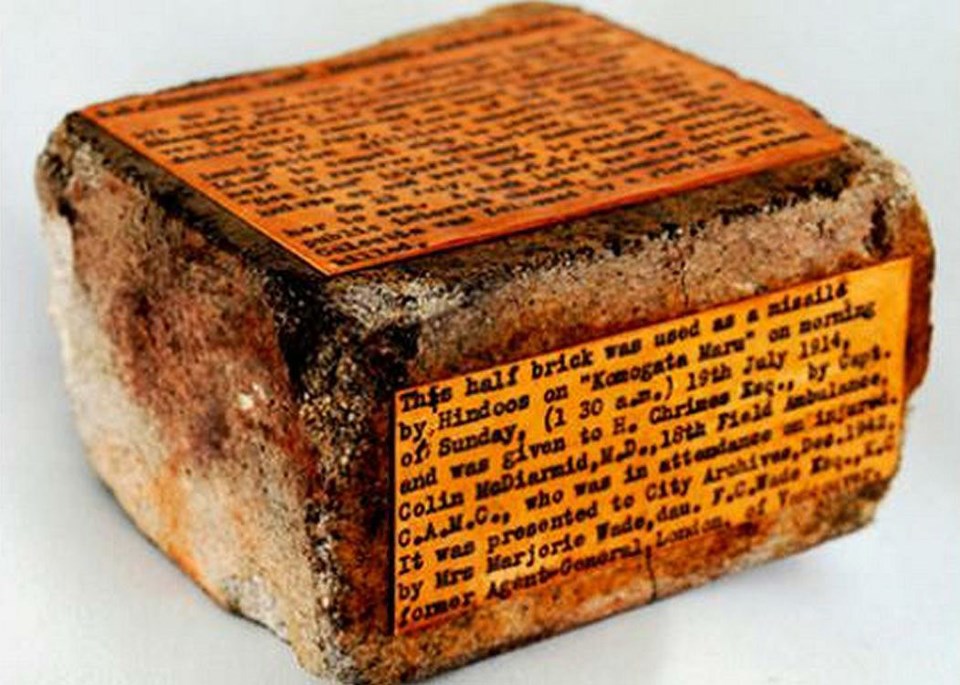
A Vancouver time travelogue brought to you by Past Tense.

Ninety-eight years ago today, a Japanese ship named the Komagata Maru arrived in Vancouver harbour with 376 passengers from India looking to settle in British Columbia. The ship had been chartered in Hong Kong specifically to challenge a Canadian law designed to keep Indians out of Canada. Unlike the Chinese, who were barred from Canada in 1923 by the stroke of a pen, Indians were British subjects and therefore couldn’t be prevented from migrating within the British Empire. The workaround was a “continuous passage” law requiring Indians to come directly from their native land with no stops along the way. The government pressured steamship companies to not provide direct passenger service from India to Canada.
A young immigration officer named Fred Taylor – better known as Cyclone Taylor in the world of hockey – boarded the ship and informed the passengers that they wouldn’t be allowed to disembark. For two months the Komagata Maru sat in the harbour while the political and legal wrangling over its fate played out on shore.
On 19 July 1914, the passengers seized control of the engine room from the Japanese crew to ensure that the ship stayed put. In response, 175 armed police approached the Komagata Maru in a tugboat called the Sea Lion, and turned water hoses on the passengers who were lined along the railing armed with coal, bricks, and other projectiles. The New York Times described the incident:
Pluckily rallying, several Hindus faced the stream and began dashing a shower of missiles upon the attacking party. Soon a tremendous storm of lumps of coal was being rained down upon the police on the tug’s deck. All sorts of missiles followed the coal shower, and under the fire of the Hindus all the police could do was dodge and beg the tug Captain to cast loose the grappling irons and get out of range.
As the shower of missiles continued, thick and fast, many men were felled by blows. As the officers pushed to that side of the tug furthest from the Japanese steamer, Detective McArthur was forced overboard.
Vancouver Sikhs put together a Shore Committee to make sure the migrants had provisions and legal and political support. Nevertheless, the courts ruled against the migrants and the gunboat SS Rainbow was sent over from Esquimault to escort the Komagata Maru out of the harbour on 23 July. Hong Kong and other British ports wouldn’t accept the ship, now considering it full of trouble-makers, and so it went back to India. At the town of Budge Budge near Calcutta, a skirmish between Komagata Maru passengers and Indian police who were trying to separate out the ringleaders resulted in the death of 20 Komagata Maru passengers.
Source: Brick decoupaged with notes from Major Matthews from the Museum of Vancouver


